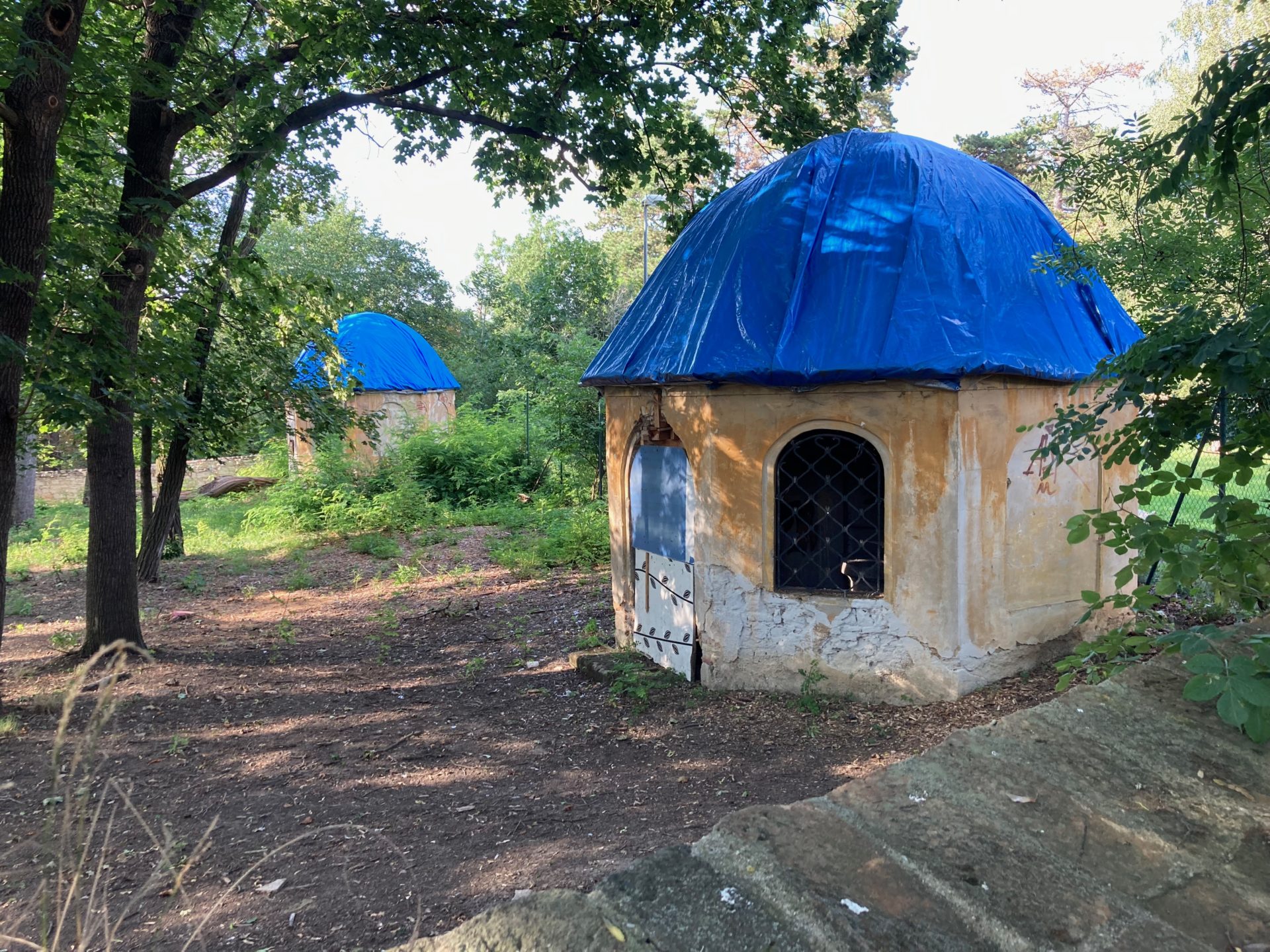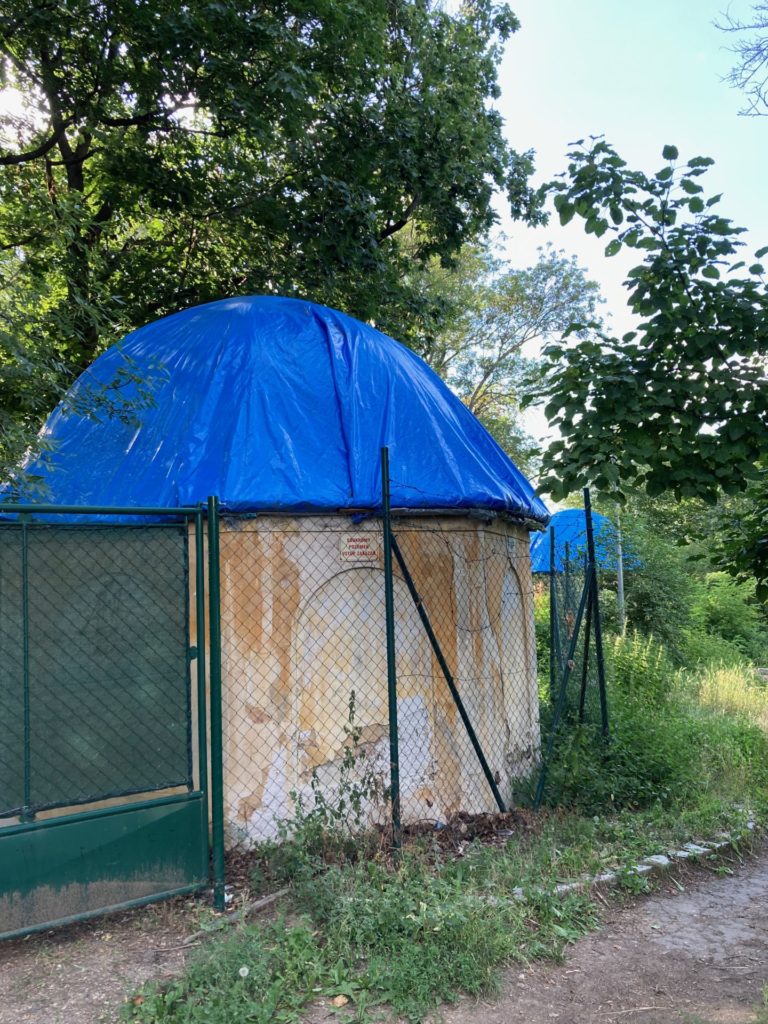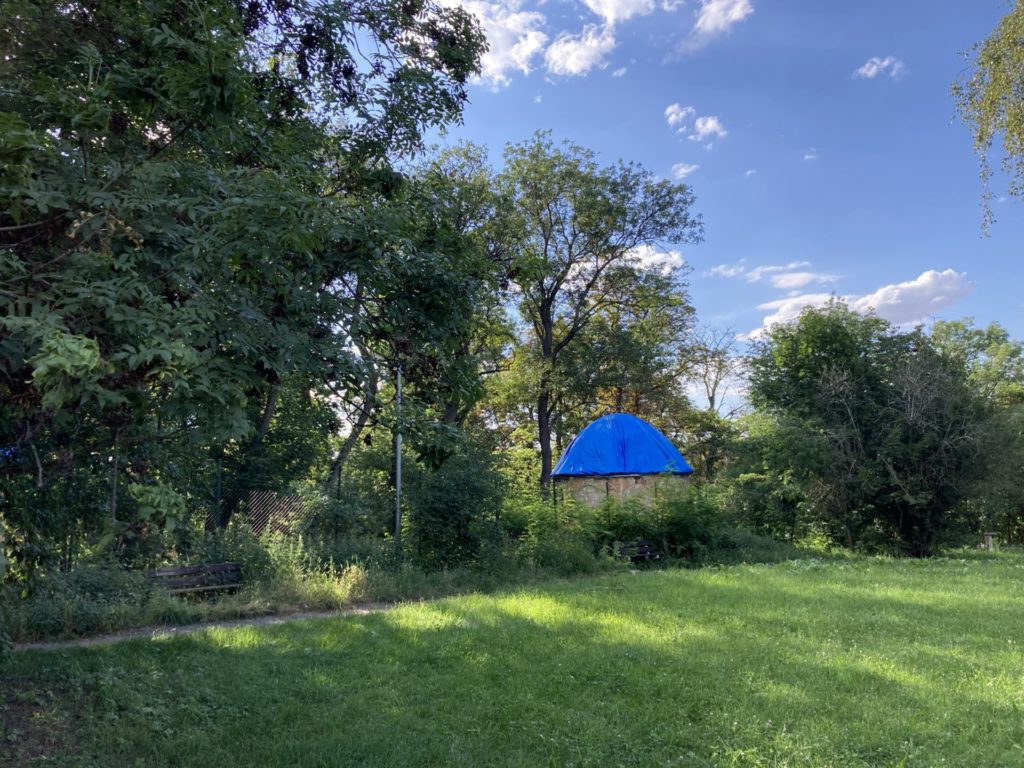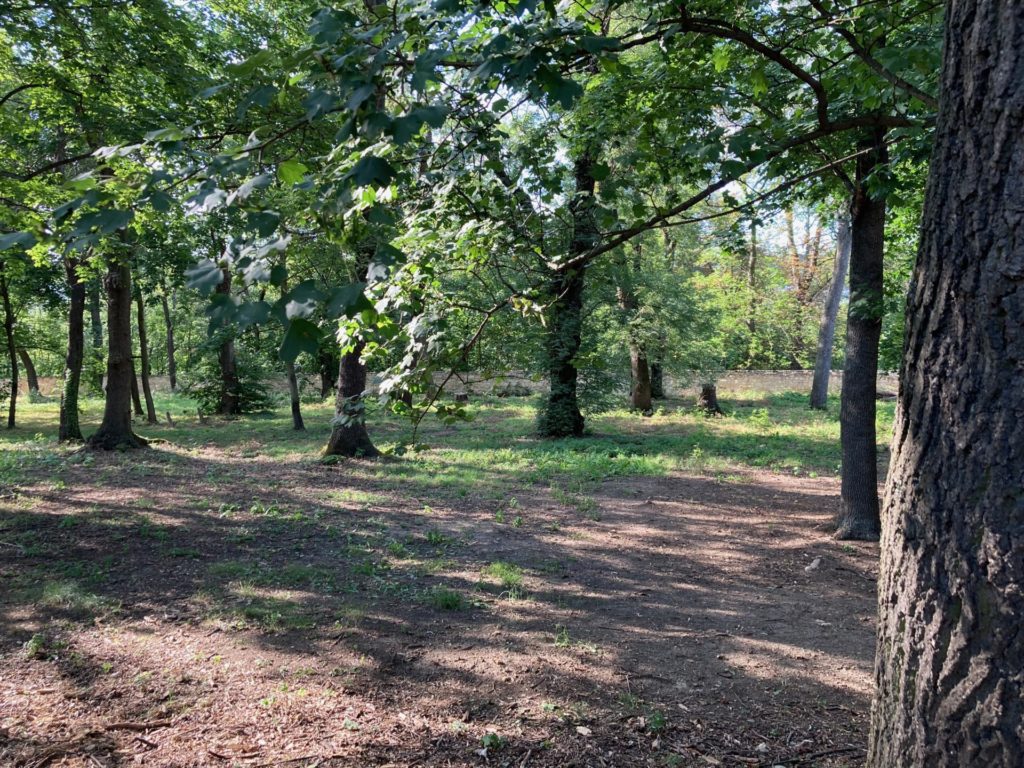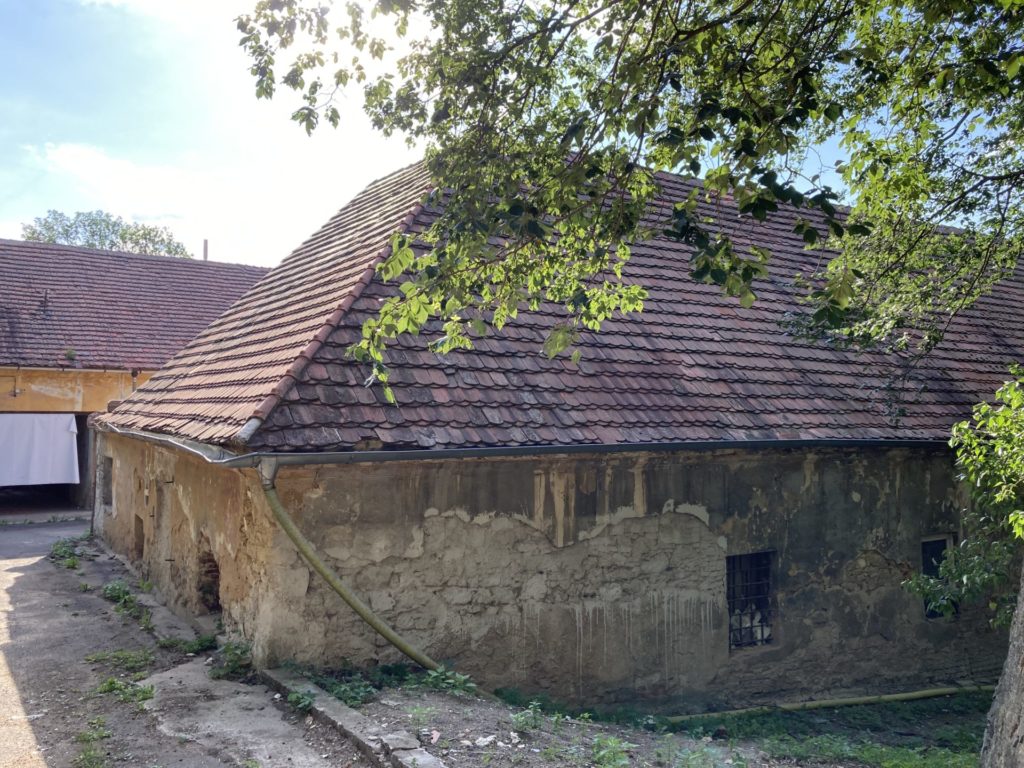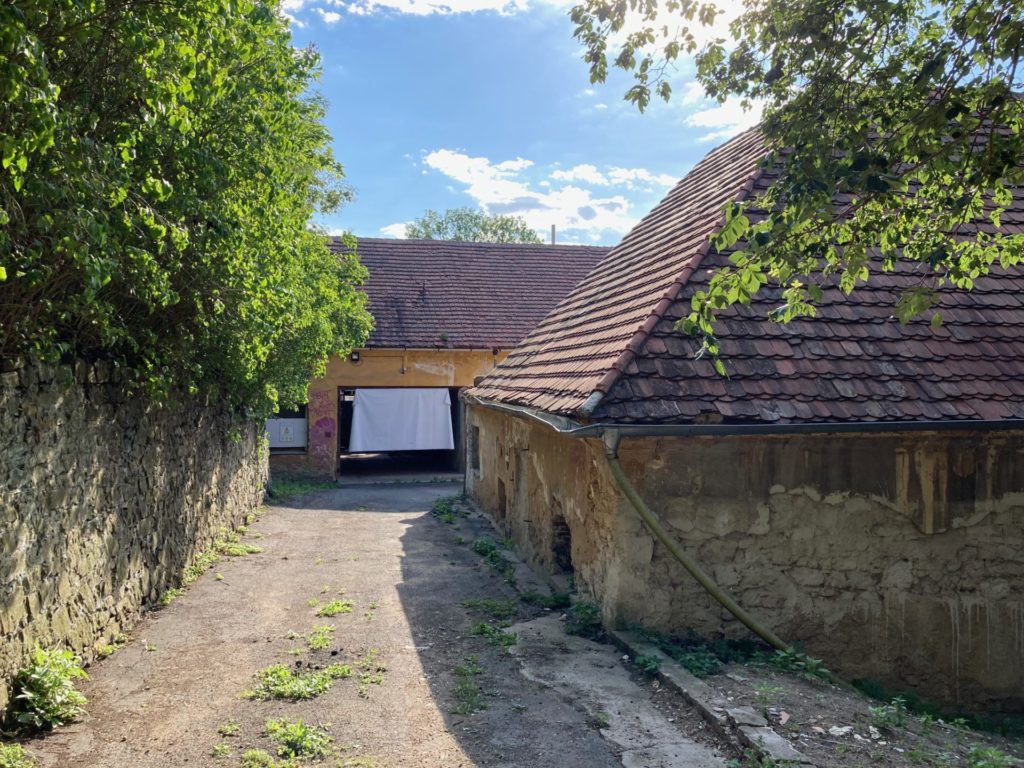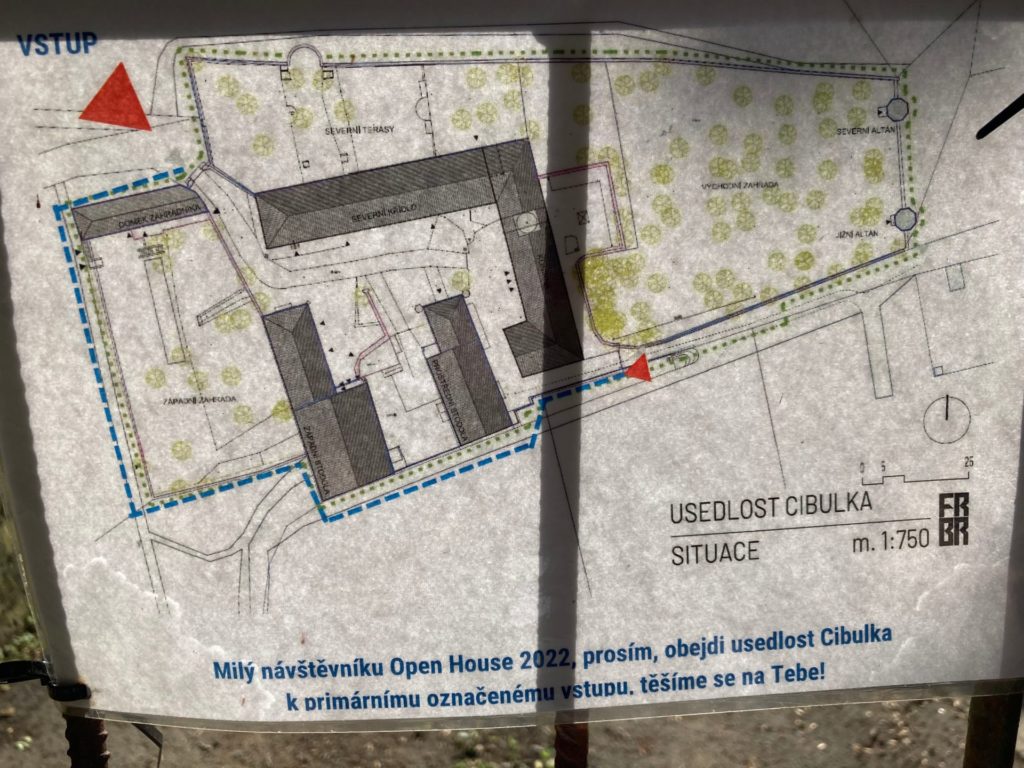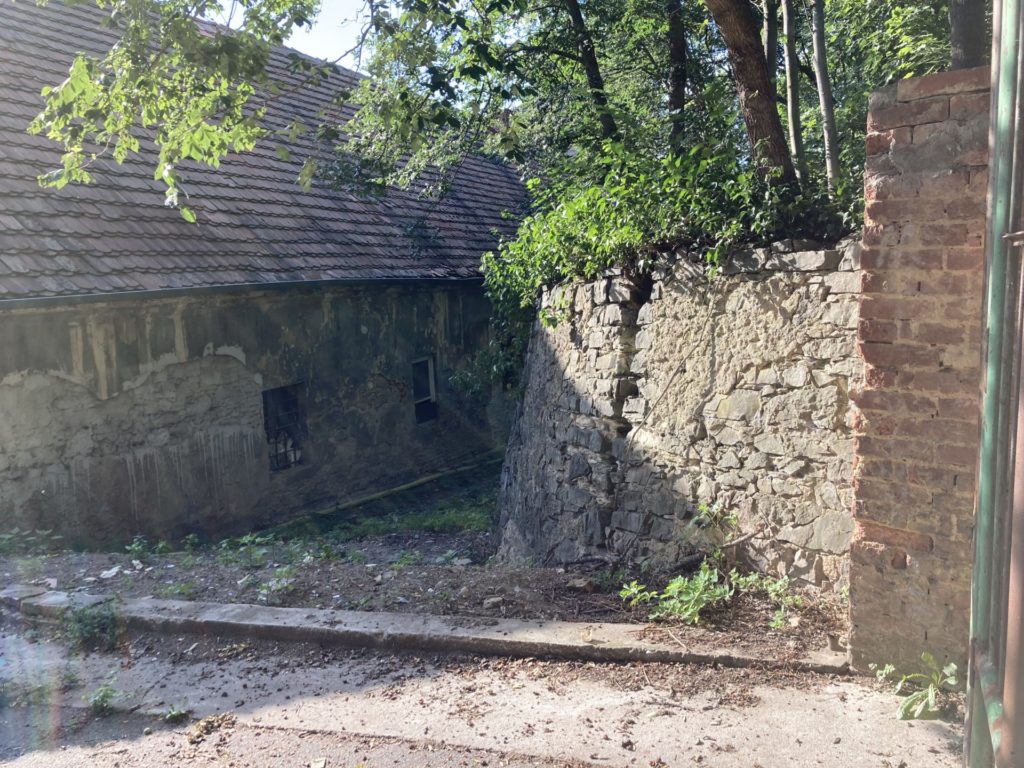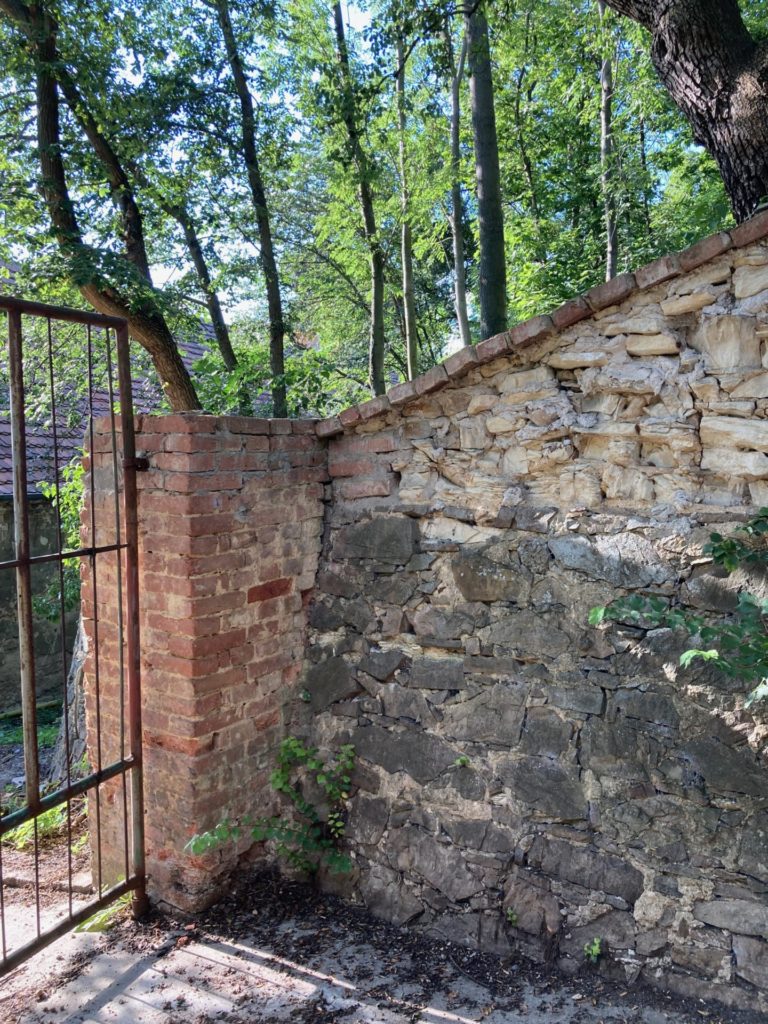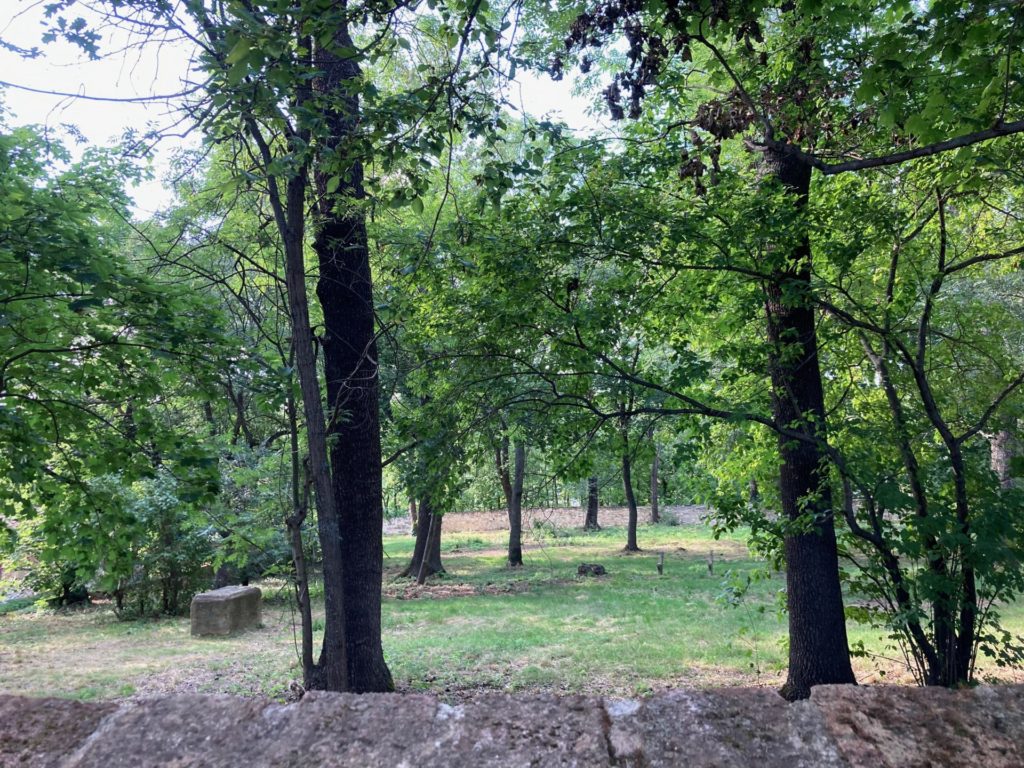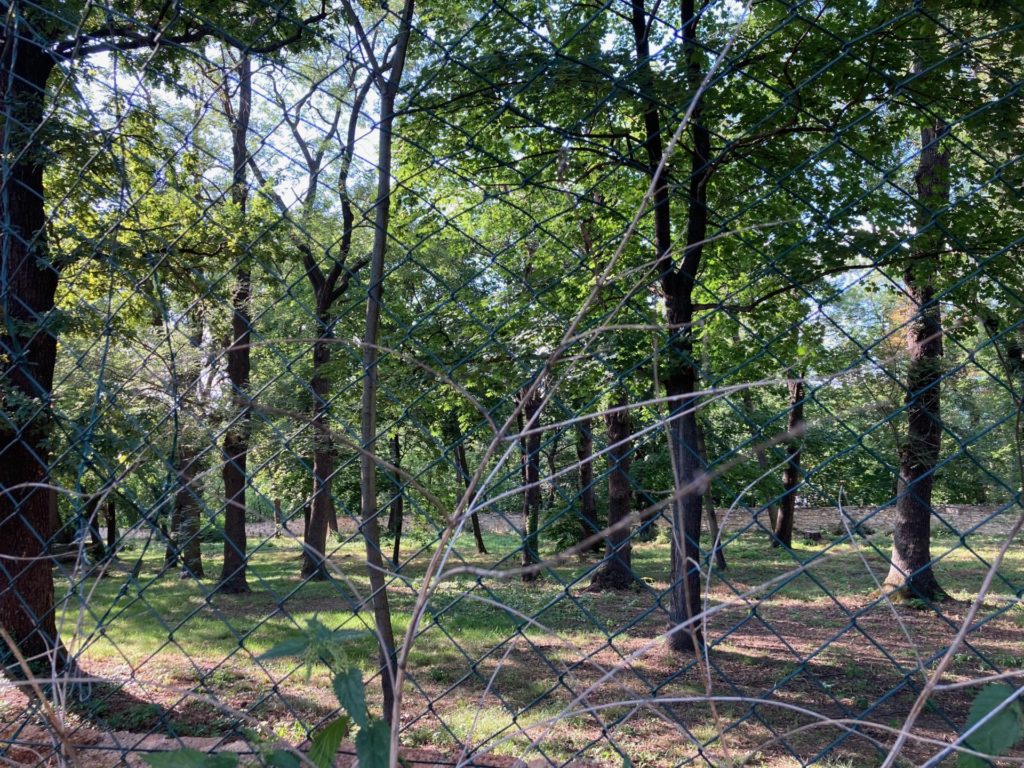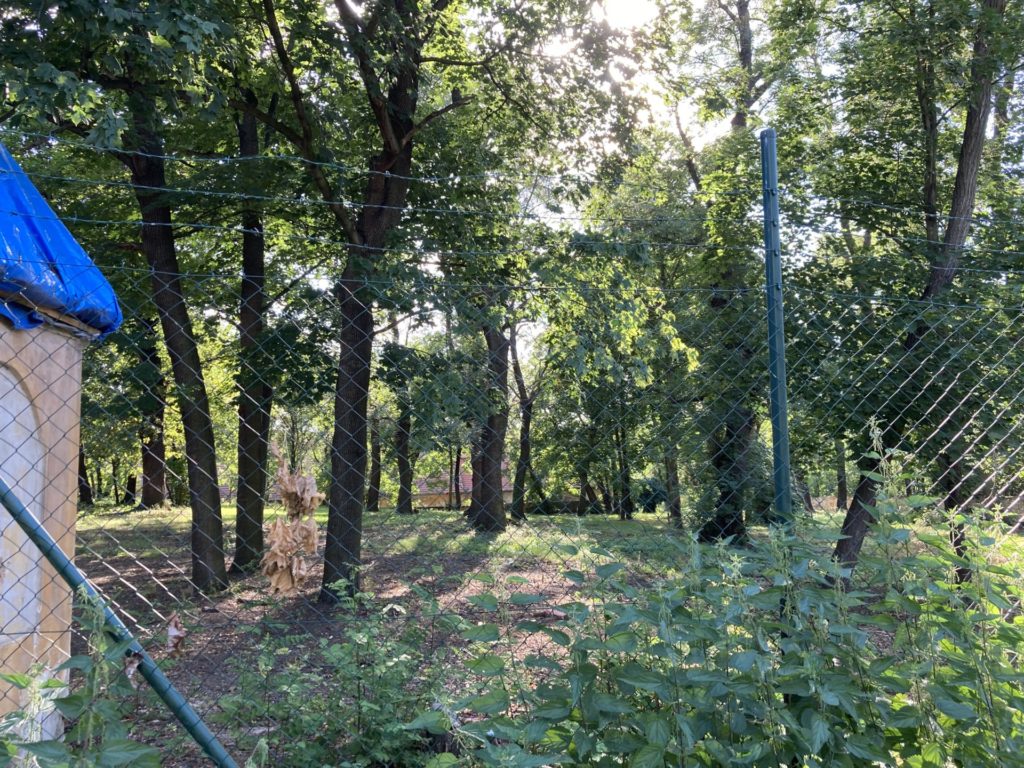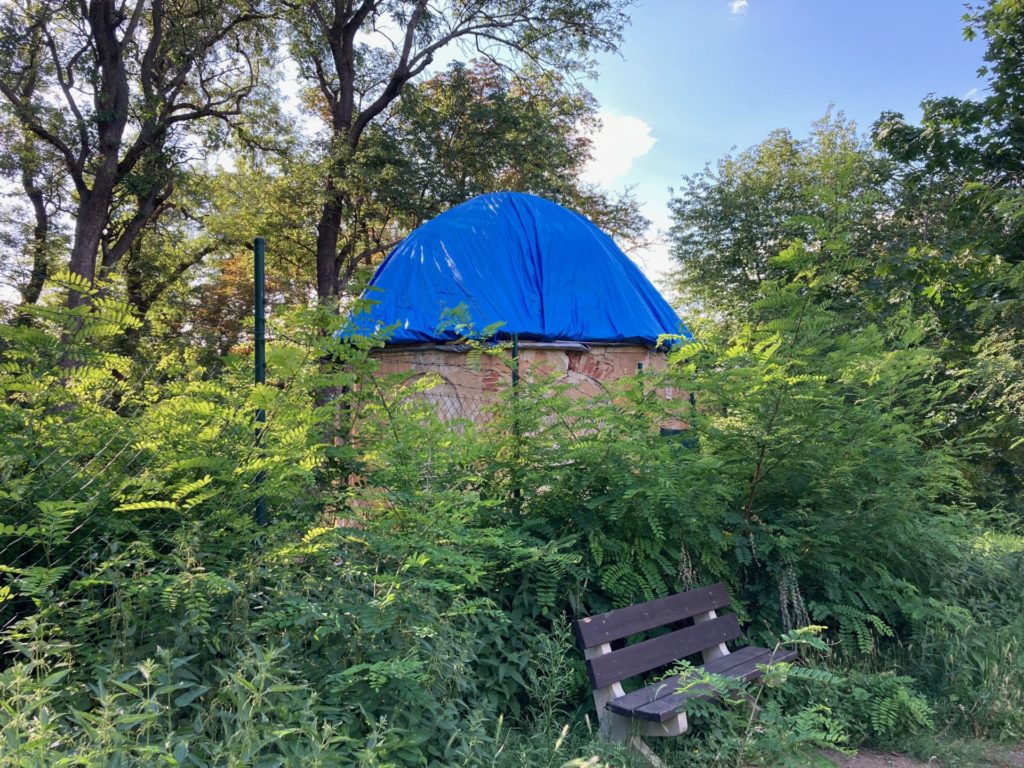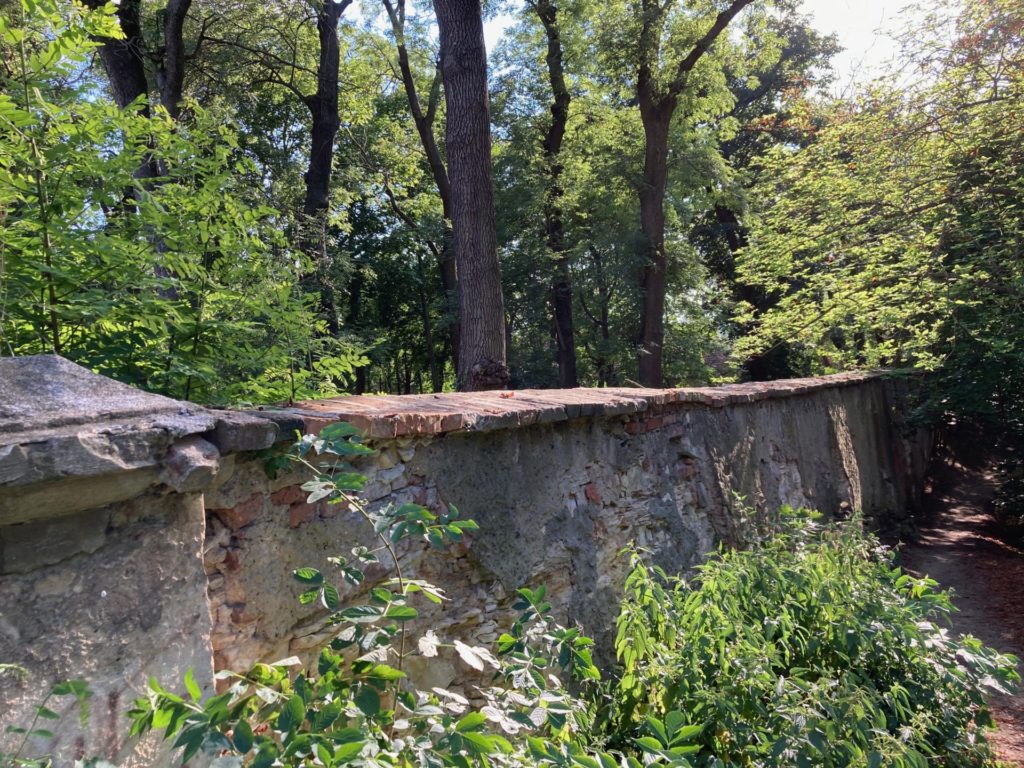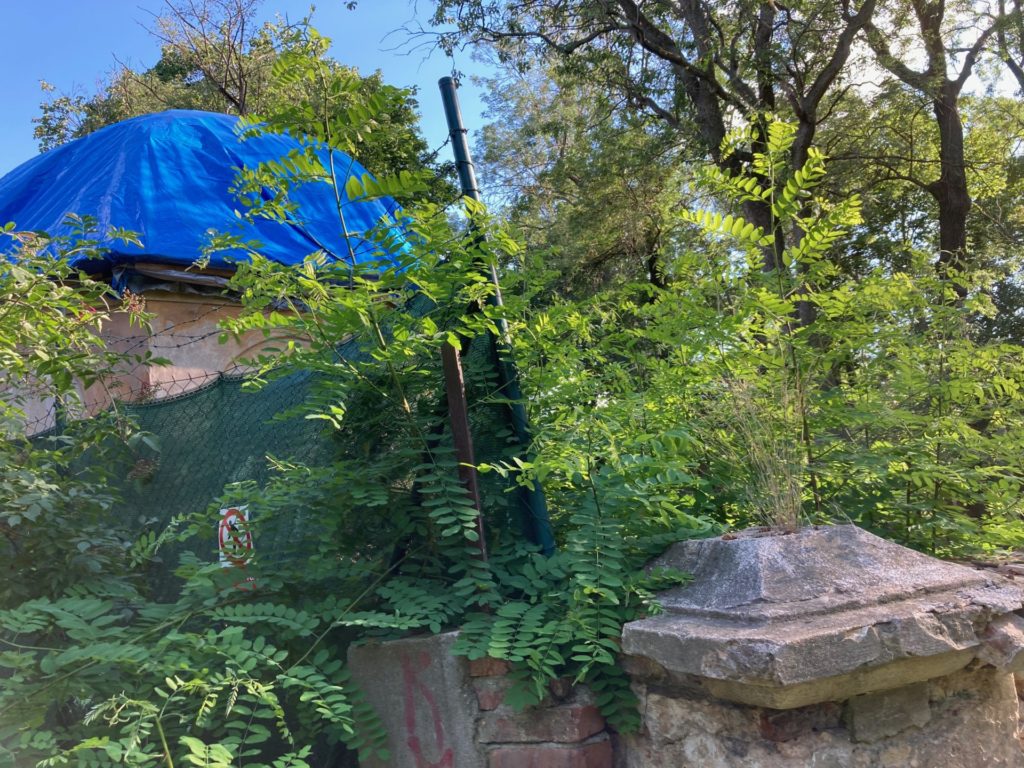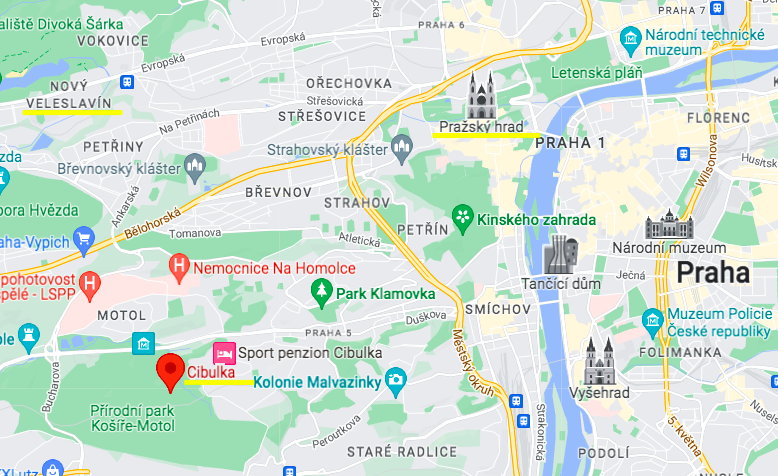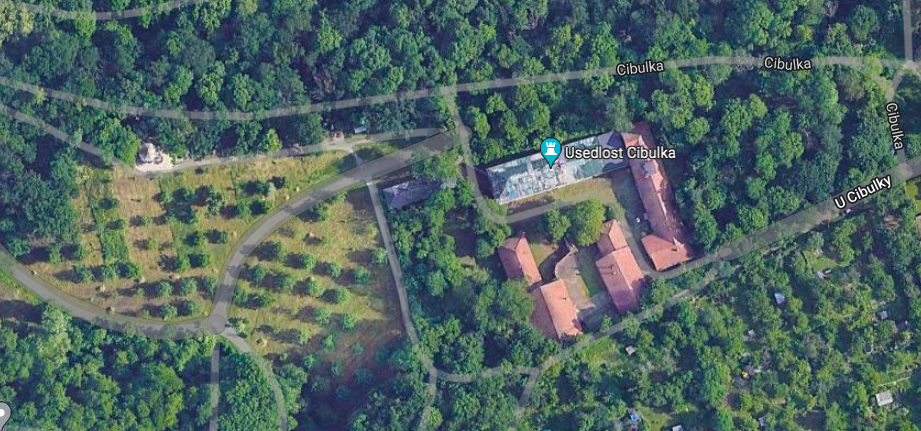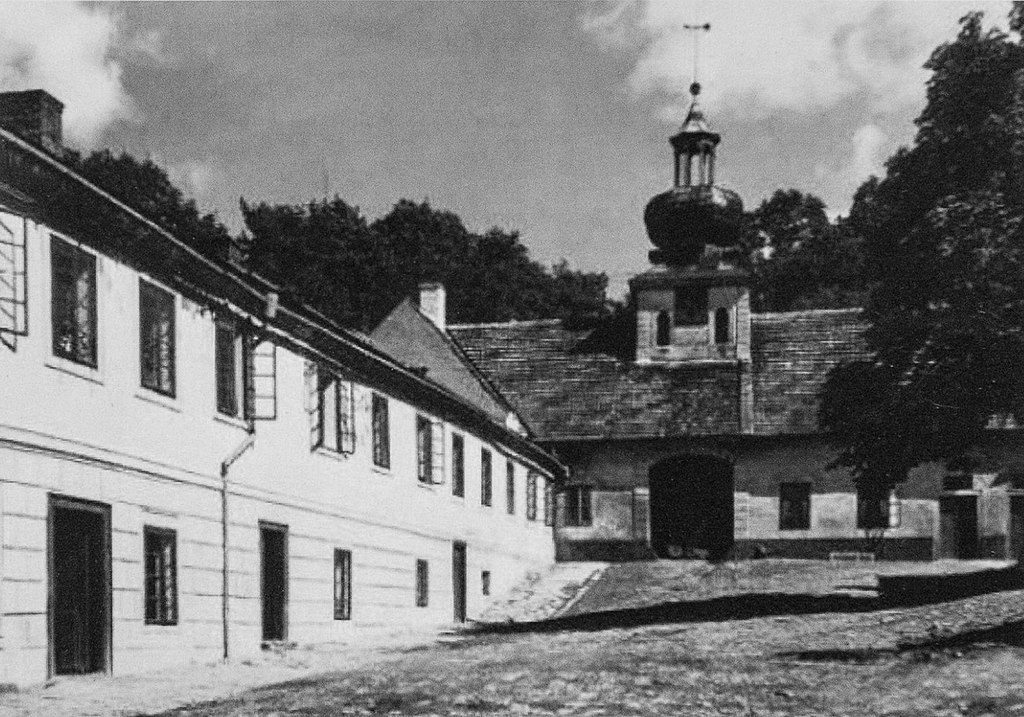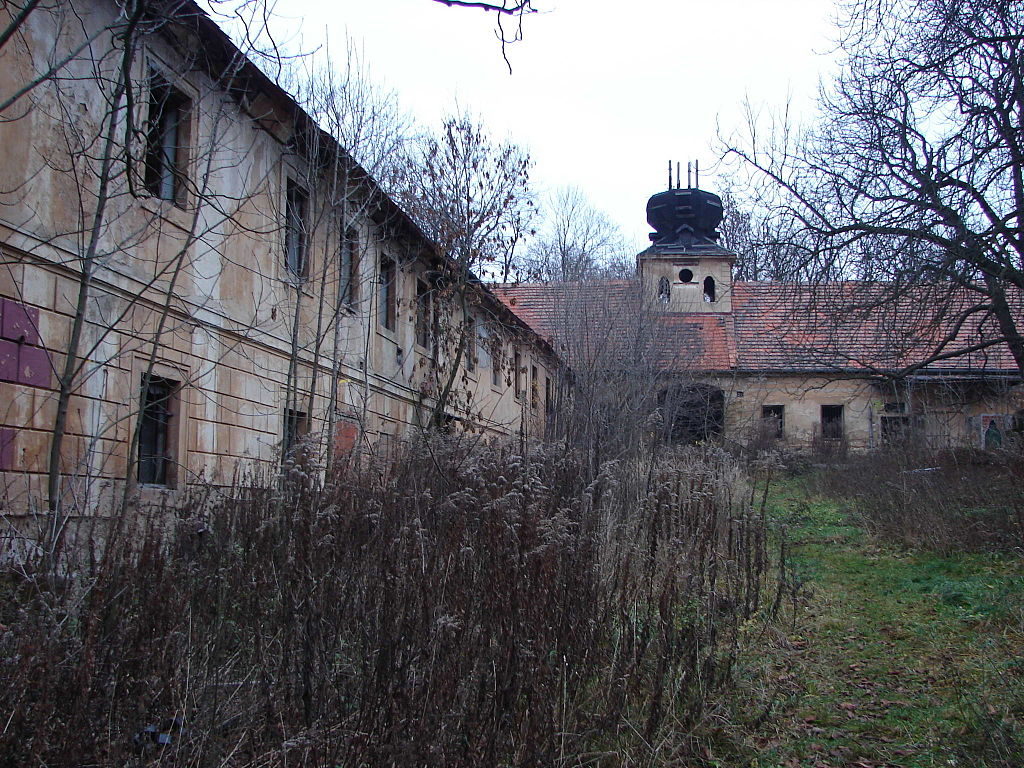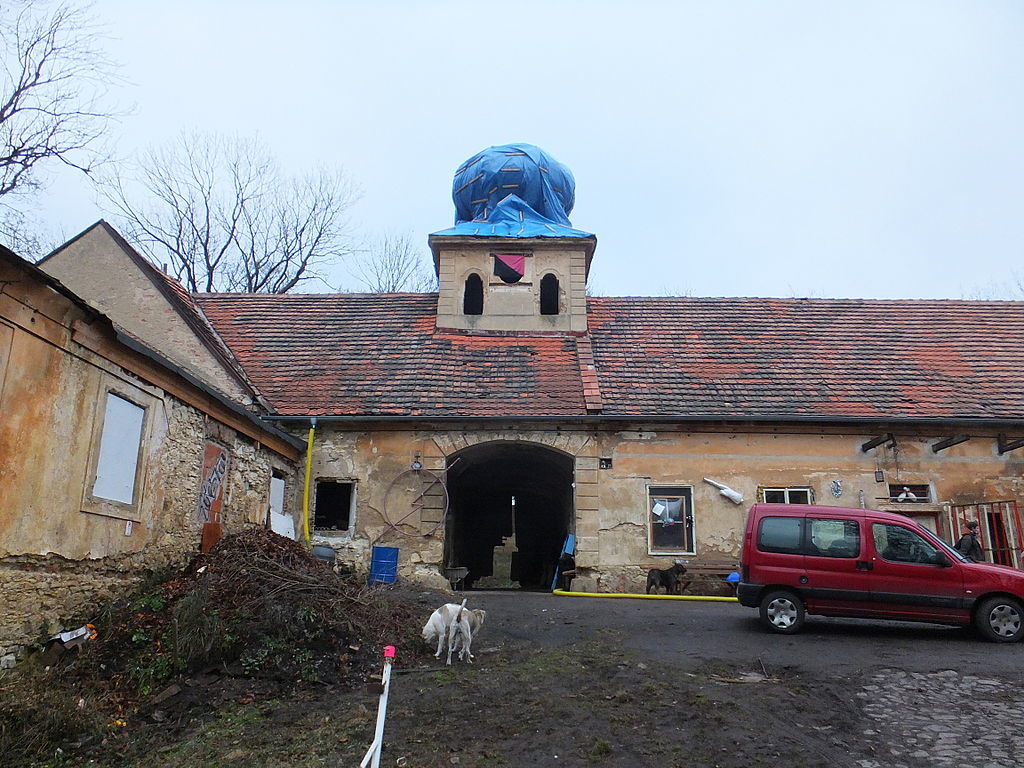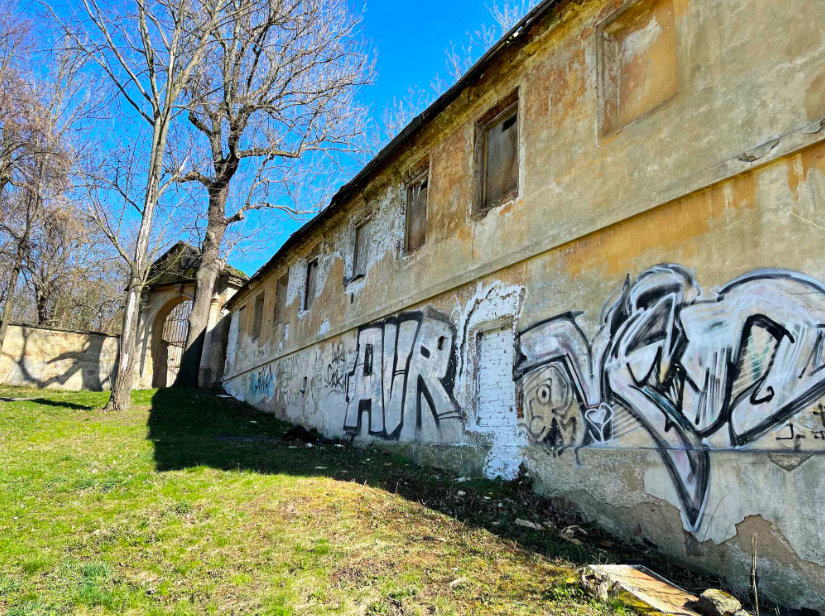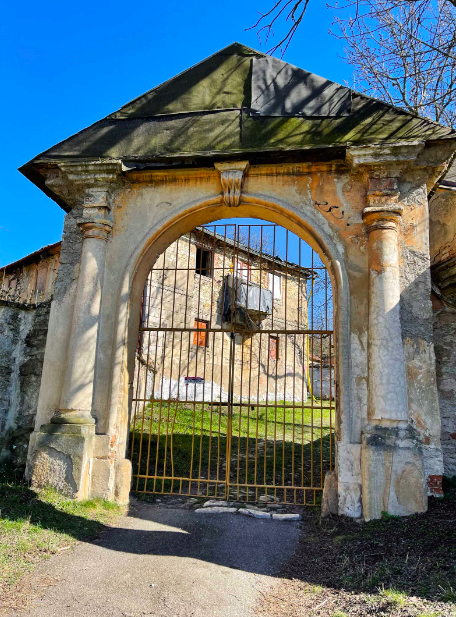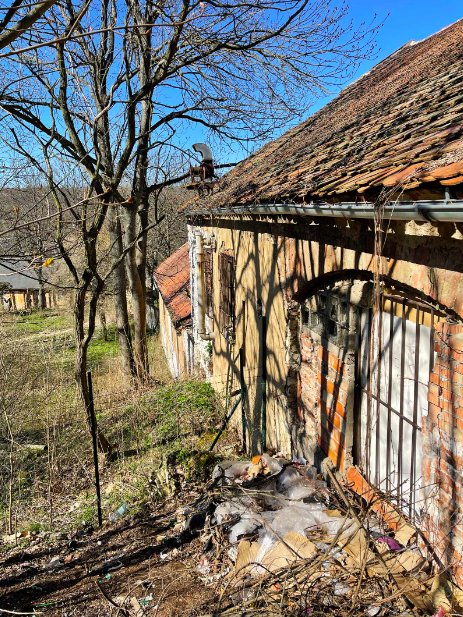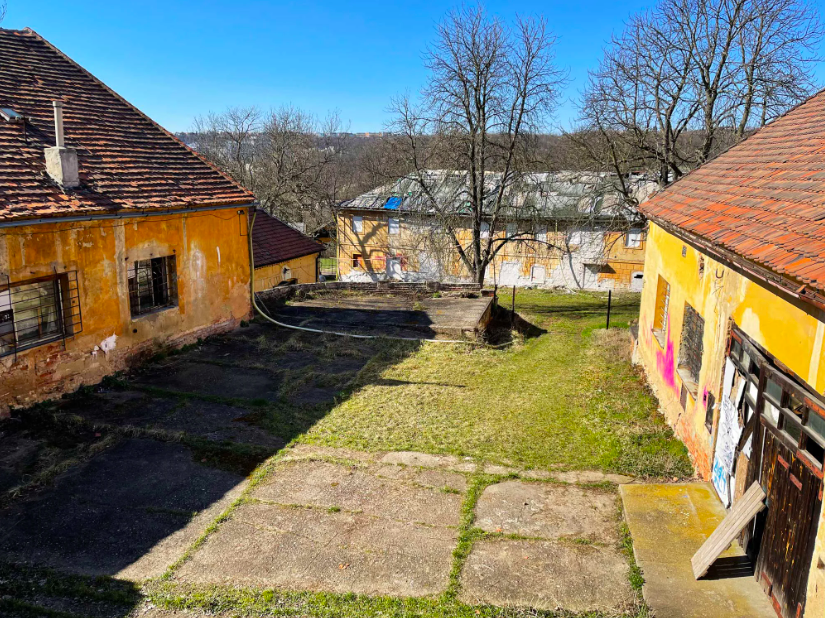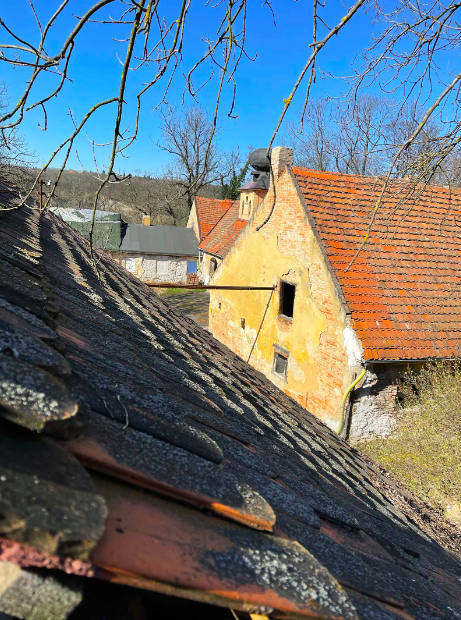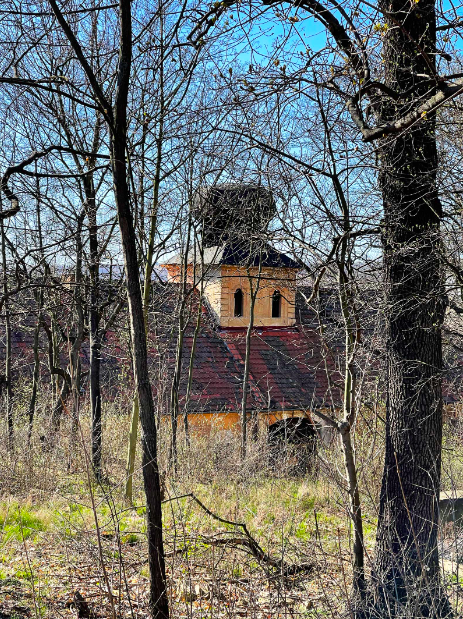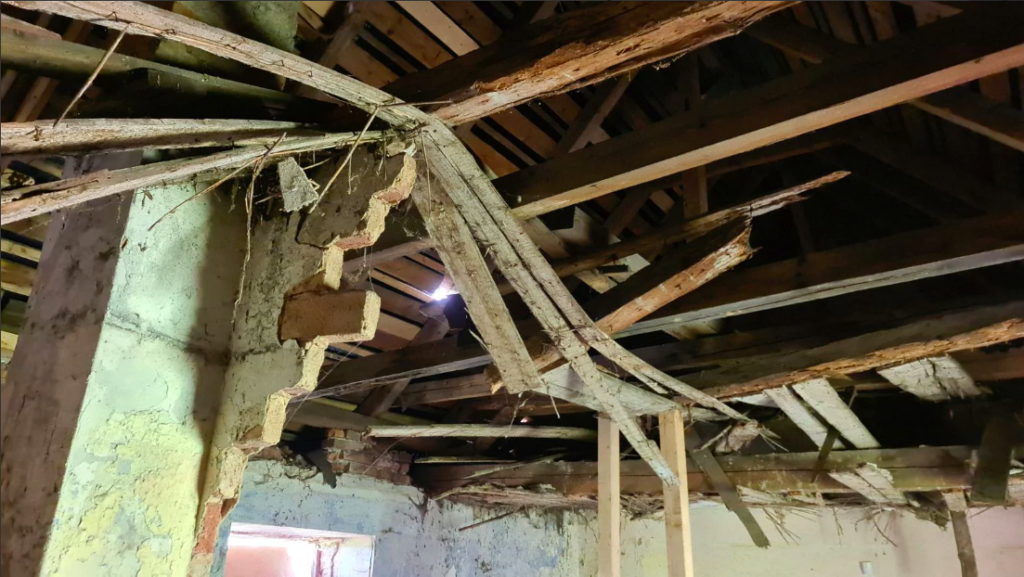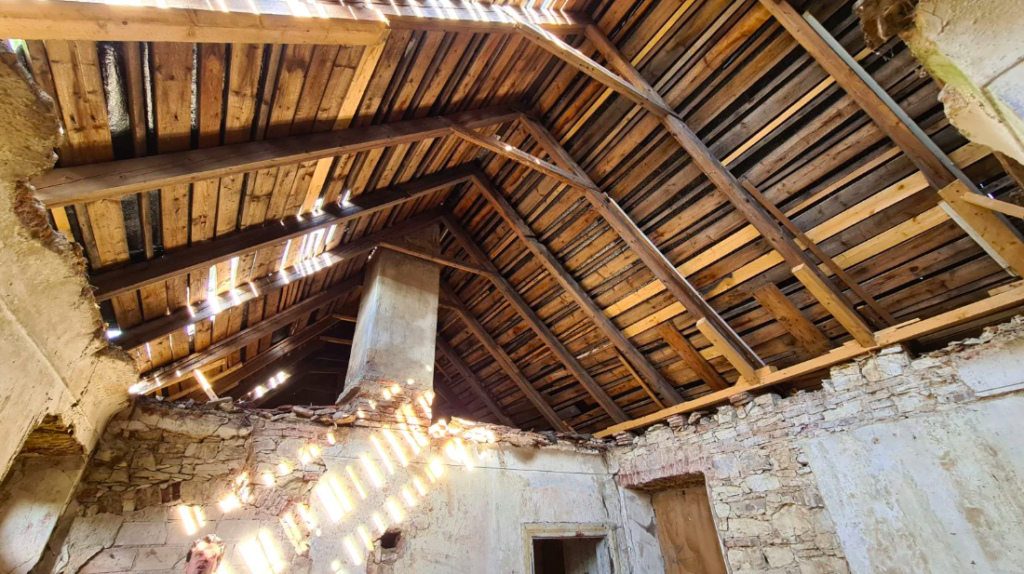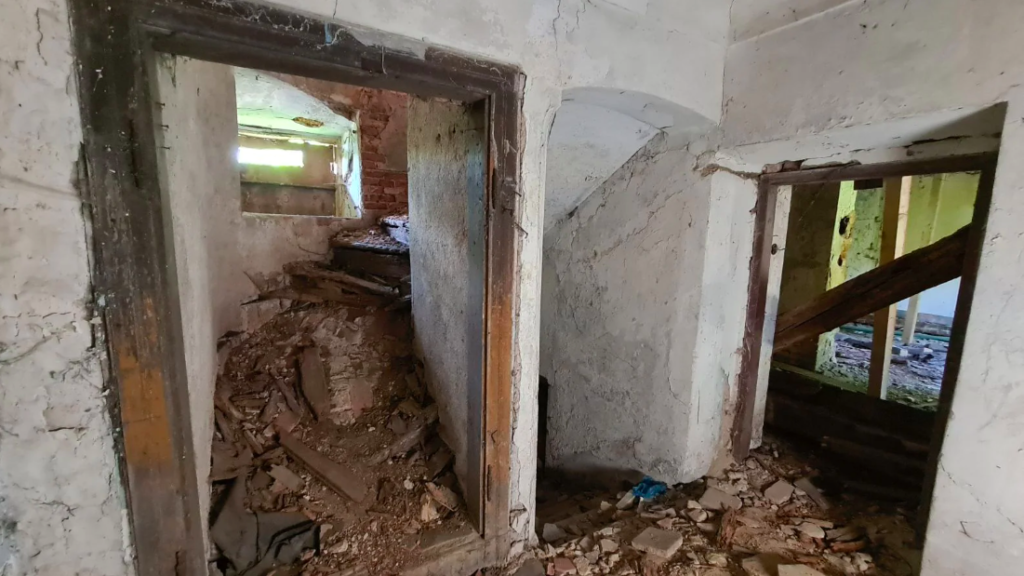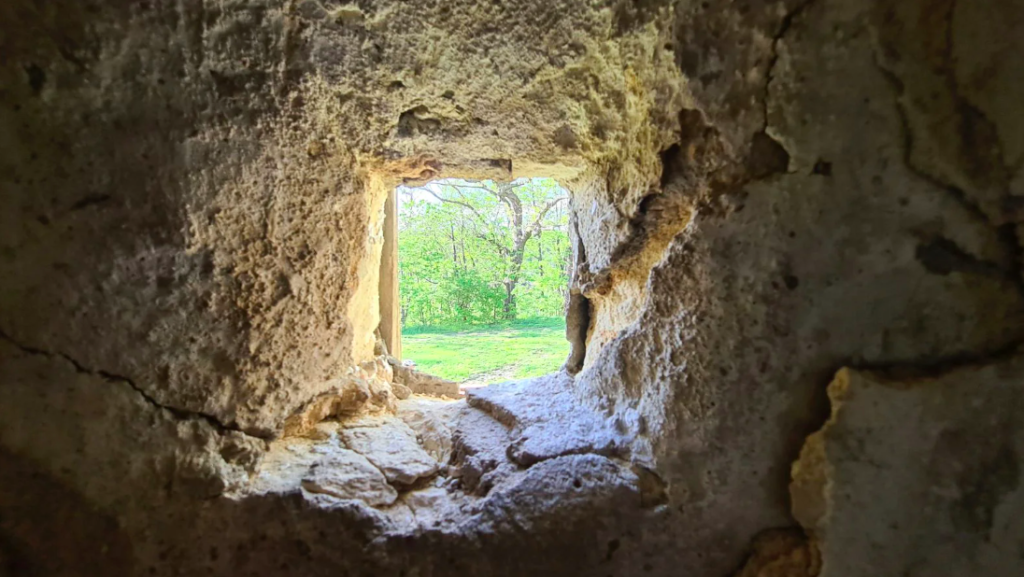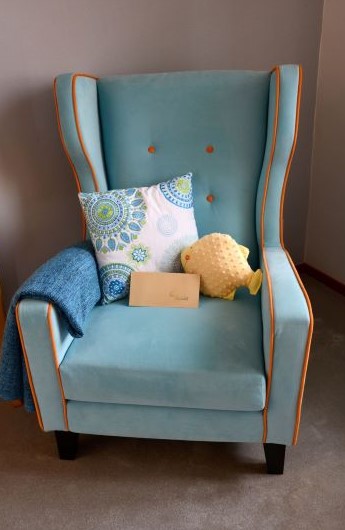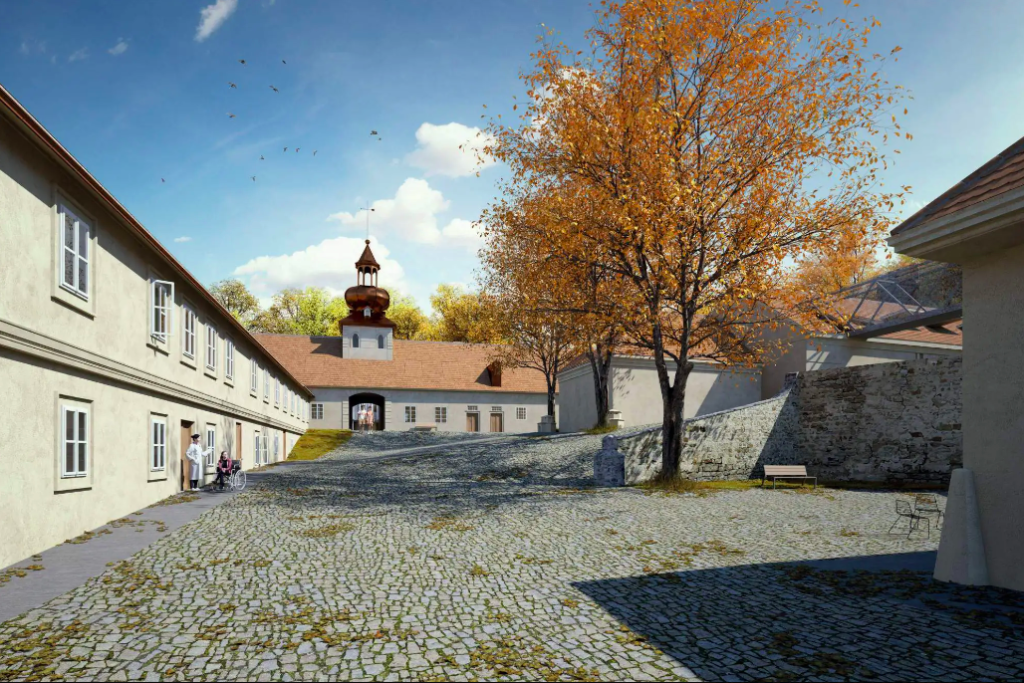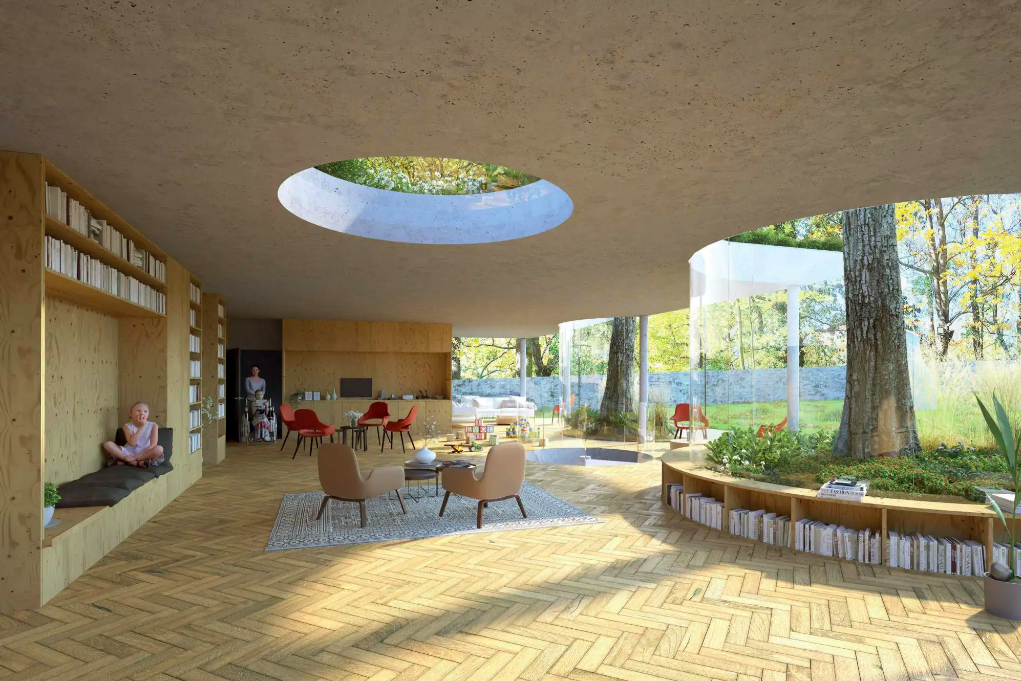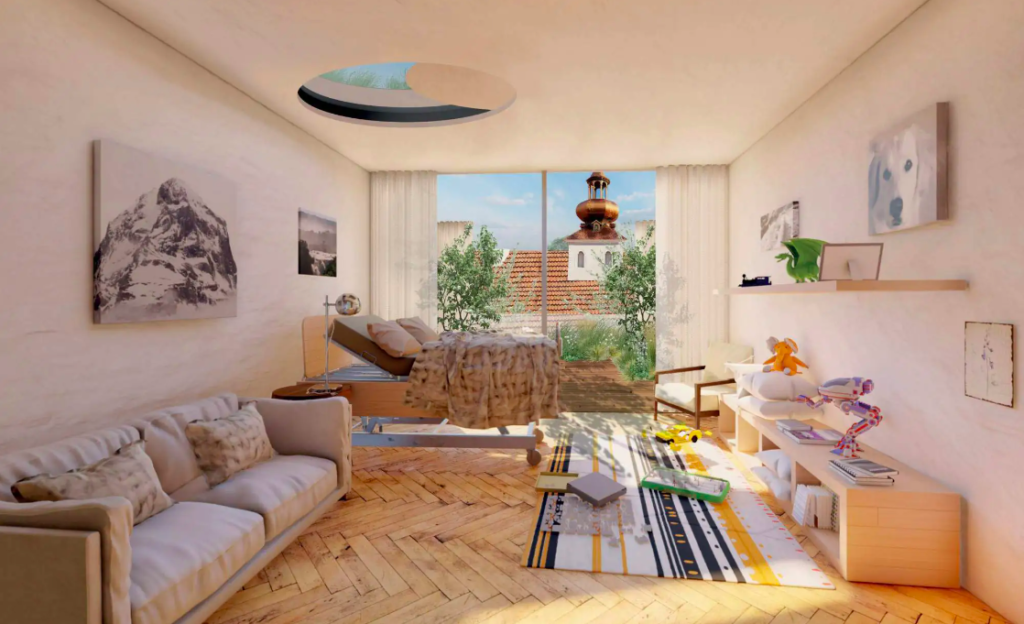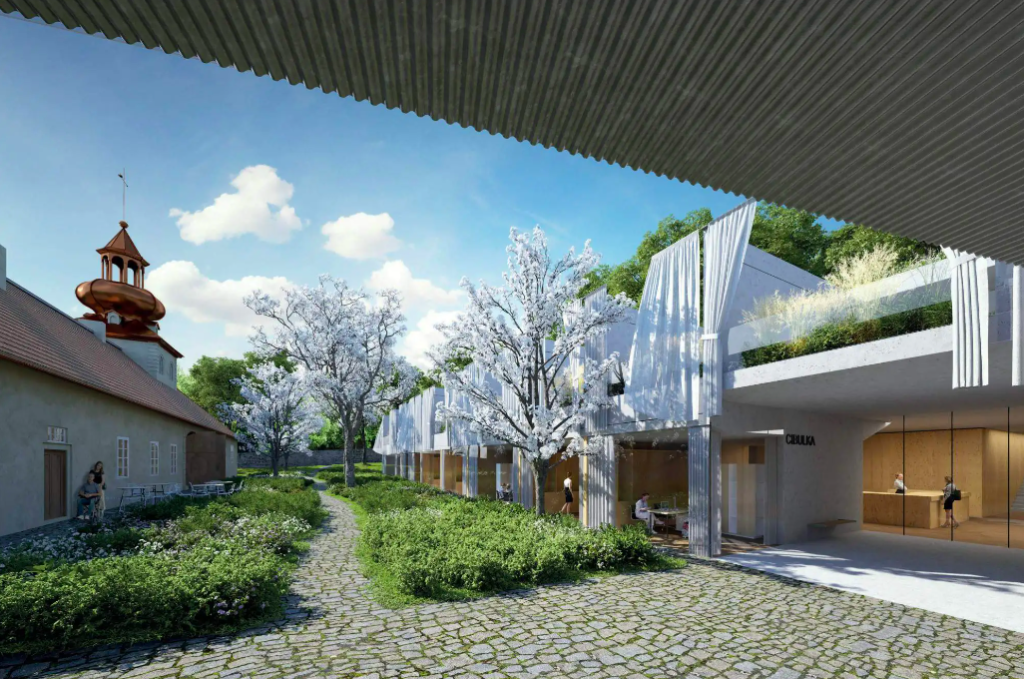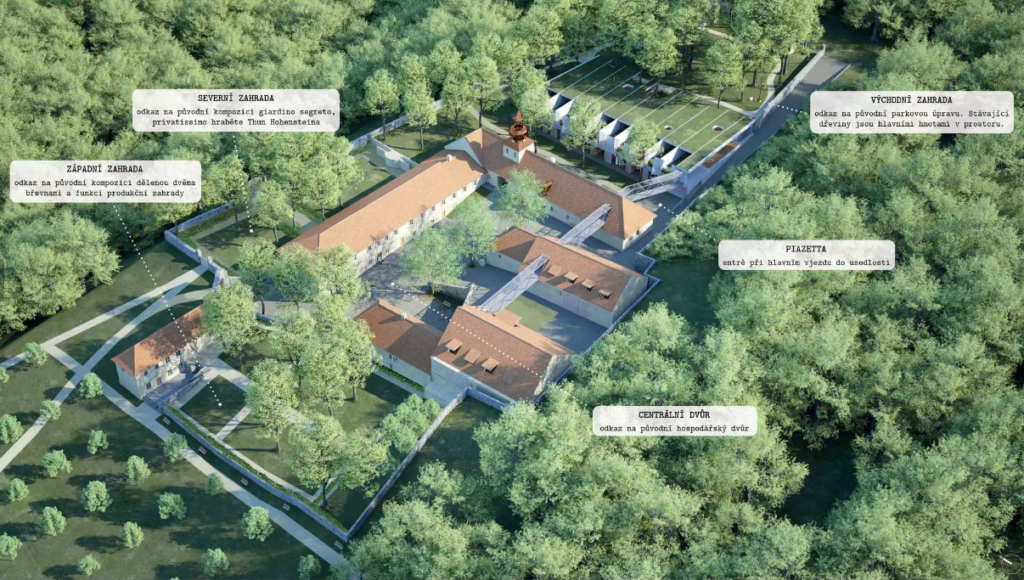It is clear from the photos that these buildings have a rich history, but that nobody took care of them for a long time, and now maybe someone else is trying to fix it. That rich history dates back to the time of Charles IV. But who covered the roof of the baroque garden pavilions with a blue tarpaulin to keep the rain out?
Let’s start from the beginning…
The homestead is called Cibulka (“small onion”) – in addition to residential and farm buildings, it also includes the Cibulka Forest Park. You can see on the map that this is the area of the wider center of Prague – you could walk to Prague Castle from Cibulka in an hour.
The first mention of Cibulka dates back to 1301, in the 15th century the estate was owned by the family of Blažej Cibulka from Veleslavín – according to them the estate got its name. During the Thirty Years’ War (1618 – 1648), Cibulka was greatly damaged and later even completely desolated.
At the beginning of the 18th century, Cibulka and its famous vineyards belonged to the burgher Vojtěchovský. Supposedly, up to 200 Protestants persecuted by the Jesuits met here – they kept a chalice and held services here.
The most significant owner of Cibulka from 1815 was the prince and bishop of Passau Leopold Leonhard Raymund Thun-Hohenstein. In the years 1817–1826, he had the entire area rebuilt into an Empire summer residence with an English park. Leopold lived at Cibulka until his death in 1826.
Unfortunately, Cibulka burned down that same year, and with that began the next phase of its gradual decay.
At the end of the 20th century, the condition of the homestead was deplorable. There were poor houses, warehouses, and even a foundry. And Cibulka still had many years ahead of it, when its inhabitants were only homeless and squatters. However, without anyone knowing it, a beautiful chapter in the history of this estate from the time of Charles IV began to be written. At the end of the millennium, two students – Katarína and Ondřej – fell in love.
They were 18 and 21 years old when they met. She wanted to become a doctor, he studied at a technical university and worked as a temp at the small antivirus company Avast during the holidays. He came there completely by coincidence – a summer job for guys who are interested in nothing but programming was recommended to them by the father of Ondřej’s friend who knew one of the two founders of Avast.
The company was really small, temp worker Ondřej was its 7th employee in the order. The future spouses Vlček planned that they would live somewhere in a mountain cottage, the sheep would graze in the meadow, Katarína would work in the nearest hospital and Ondřej would work from home as a programmer. They had drawn this idyllic picture with the sheep not only in their minds but also on paper.
A quarter of a century later, the couple has three sons. Katarína is a renowned doctor in the field of palliative care, Ondřej is the director of Avast, the second largest antivirus company in the world. In March 2021, they had personal assets of 4 billion crowns and decided to invest 1.5 billion of them in a family foundation that will build a children’s hospice with a palliative care center.
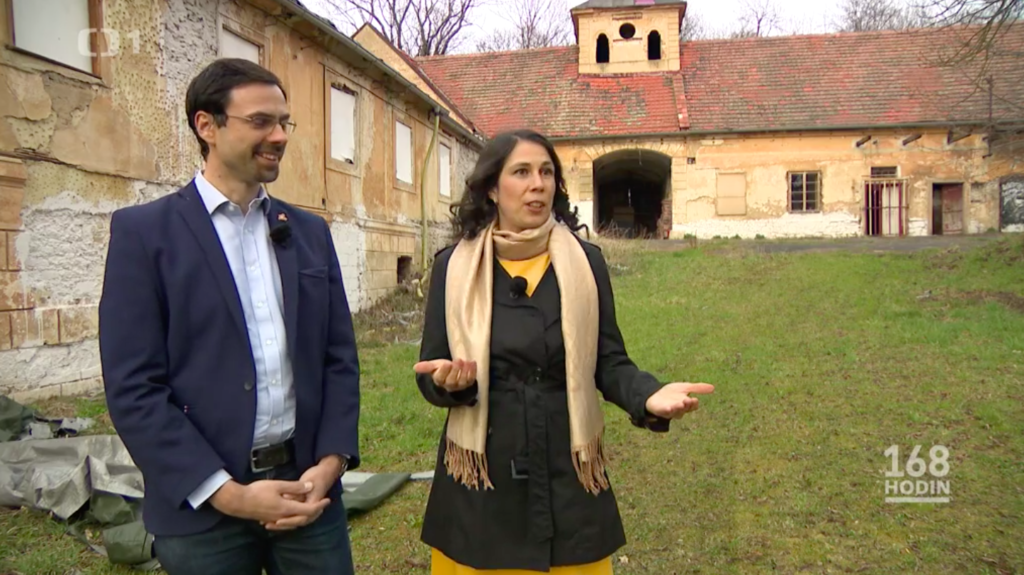
At that time, it was by far the largest private act of charity in the modern history of the Czech Republic, and as such, it amazed all Czechs (just to realize the size of that amount: 1.5 billion crowns are the amount that a Czech with a statistically average salary would earn for 3200 years). And it is only praiseworthy that it also made an impression as a good example: less than a year after the Vlček family, the Walach brothers also invested 1.8 billion crowns in their family foundation: they stated that one of the impulses for such a large amount was the example of the Vlček spouses.
Why did the Vlček family choose this amount?
Ondřej: “I studied mathematics and I have a warm relationship with numbers. The amount we chose roughly corresponds to our age. That is, we are in our forties, so we wanted it to be around 40 percent.” (1)
Katarína: “We don’t discuss money much. It’s because my husband and I have a lot of trust in each other. We did not discuss which billion will be used for what. The amount was determined by my husband. When he told me, I watched probably the same as everyone who read it in the media. I was extremely pleased. I take that as his great generosity.” (2)
Cibulka is not the first initiative of the Vlček family for the benefit of seriously ill children. Since 2015, their project named after the fairy tale of the Brothers Grimm – The Golden Fish has been operating. This goldfish also grants wishes, not to the fisherman’s wife, but to sick children. They can be material, travel, or even emotional wishes – the Golden Fish team, for example, managed to arrange a meeting of a child with footballers Messi or Ronaldo.
The dreamer’s chair plays an important role in this. Seriously ill children sit in it and talk about their wishes. The goldfish makes them come true. So far, she’s granted over 850 of them. (3)
This May, Ondřej Vlček became the general partner of Czech rowing. However, the advertising space on the jerseys and boats will not make him visible, but the Good Angel Foundation. This was founded 11 years ago by other successful entrepreneurs, Petr Sýkora and Jan Černý – the goal of the foundation is to help families with children who have found themselves in a difficult situation due to a serious illness.
Ondřej Vlček says that this connection killed two birds with one stone.
Katarína Vlčková says that she and her husband want palliative care to be available to all families with a seriously ill child for many years of life with an illness that probably won’t allow their child to live to adulthood: “Families who have been caring for seriously ill children for a long time will find refuge at Cibulka. Most of the stays will be temporary, just for a weekend or a week, so that the parents can rest for a few days and go on holiday with their sick child’s healthy siblings.” (4)
Ondřej Vlček: “One of the biggest problems for affected families is total social isolation. They have a sick child, they spend everything – time, money, effort – to help that child. But this completely isolates them from the rest of the world. And we would like the house to be a community center where families can meet each other and the community that lives in the neighborhood.” (5)
The 700 years of Cibulka homestead’s existence can be described as a sinusoid. Her most beautiful period is associated with the name Leopold Leonhard Raymund Thun-Hohenstein.
Mr. and Mrs. Vlček not only bought the buildings and financially secured the establishment of the palliative care center, but also its continued ongoing financing with the proceeds of the money invested. Although they are still young, they admit the possibility of their sons taking over the project in the coming decades: “So that the children realize that money can create some greater value that goes beyond us.” (6)
The reconstruction of Cibulka into a palliative care center is scheduled to be completed in 2026, which is no coincidence – that year will be the 200th anniversary of the death of Leopold Leonhard Raymund Thun-Hohenstein. Obviously, he, who truly loved Cibulka dearly, would have been extremely excited about the Vlček couple’s project and the efforts they put into it.













